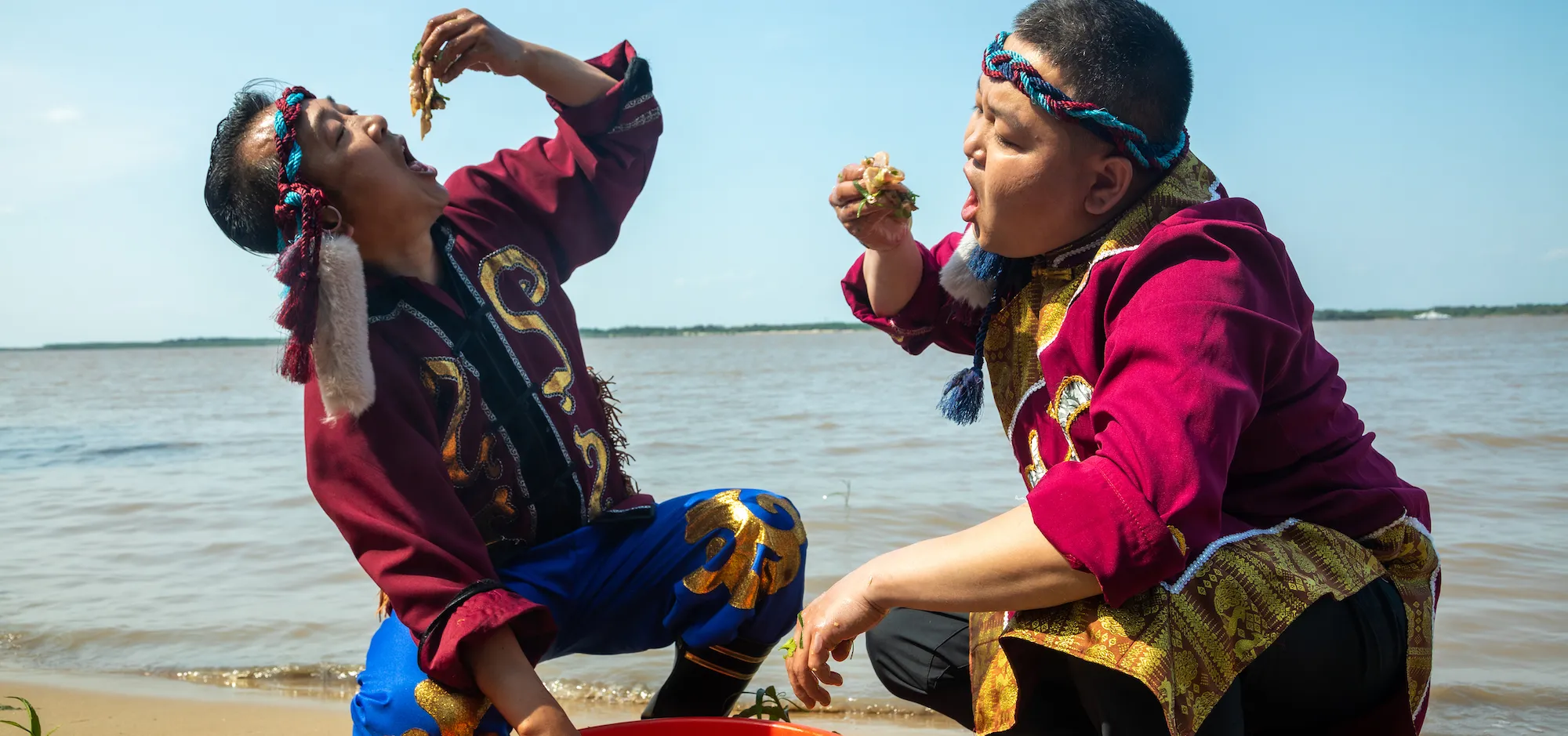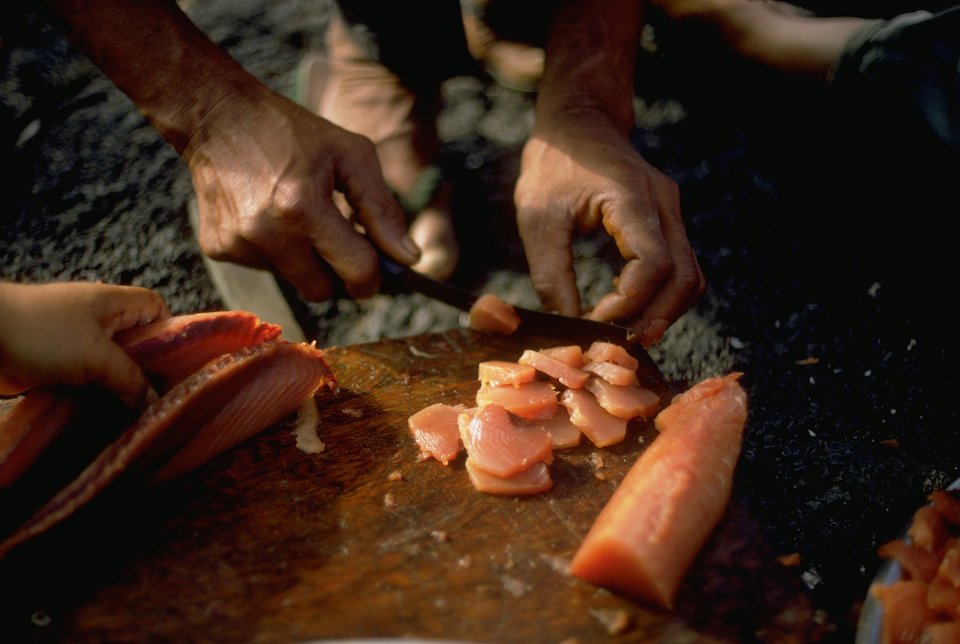Records show Chinese were eating sliced raw fish over 2,000 years ago
Sashimi may now be considered a classic Japanese dish, but China has its own ancient tradition of consuming raw fish. It’s a long history, stretching back as far as the Zhou dynasty (1046 – 256 BCE), with the delicacy becoming increasingly fashionable over the centuries. Although its popularity waned when diners and doctors began to link a number of diseases to its consumption, some places, particularly in the south, have maintained China’s raw fish-eating traditions.
The Book of Rites (《礼记》), a collection of texts mainly published in the Han dynasty (206 BCE – 220 CE) on the society and politics of the Zhou era, describe how sliced raw fish, mutton, and beef, known collectively as “脍 (kuaì),” had been one of the most popular dishes in ancient China even before the Qin dynasty (221 – 206 BCE). Raw meat and fish were often served at banquets for the nobility together with roasted meat, known as 炙 (zhì). Kuai’s value can be seen in a literary chengyu of the time still widely used today: 脍炙人口 (kuàizhì rénkǒu), meaning to win universal praise and popularity, as both kuai and zhi were considered delicious.
The raw fish was usually prepared in a similar way to today: The Book of Rites recorded that “kuai is eaten with leeks in spring, and with mustard sauce”—just like how wasabi is the preferred modern condiment for sashimi.
Carp was among the most popular fish to have raw. According to the Classic of Poetry (《诗经》), the oldest known collection of Chinese poetry compiled between the 7th and 11th century BCE, a minister during the Zhou dynasty named Yin Jifu (尹吉甫) hosted a banquet for his friends, serving his guests main courses of steamed soft-shelled turtle and sliced raw carp.
During the Qin and Han dynasties, raw fish became increasingly popular, particularly in the south of the country and the Jiangnan region where there was an abundance of saltwater and freshwater fish. People even invented a new character, 鲙 (still pronounced kuai), to specifically refer to sliced raw fish, adding the fish radical 鱼 to the original 脍.
During the Northern and Southern dynasties (420 – 589), a dish named “金齑玉鲙 (jīnjī yùkuài, golden slices of jade fish)” appeared, which became perhaps the most famous 鲙 dish in Chinese history. The Qimin Yaoshu (《齐民要术》), a famous agricultural text written in 544, recorded the recipe in detail. The secret lies in its sauce, which is made of seven ingredients: garlic, ginger, orange peel, salt, salted unripe plum, roasted chestnut, and steamed rice. All of them were mashed until creamy, making the “golden slices (齑 jī)” which adorned the uncooked fish. Though different records show different recipes for the sauce, it was always meant to be golden. Legends hold that Emperor Yang of the Sui dynasty (581 – 618), an infamous tyrant, was a big fan, and sliced raw fish became part of court cuisine during his reign.
People’s love for raw fish peaked in the following Tang dynasty (618 – 907). Shanfu Jingshou Lu (《膳夫经手录》), a Tang cookery book, suggested that many kinds of fish could be served this way: “As for sliced raw fish, the best are carp, bream, gurnard, porgy, and, after that, perch.”
Many poets of the Tang dynasty wrote about their love of raw fish. Wang Changling (王昌龄) recorded that sliced raw fish was once served at a farewell banquet: “Feeling sad about our departure on such a winter night here in Wuxi, while the black-colored fish were sliced and sprinkled onto the orange-colored sauce just like snowflakes.” While the poet Du Fu (杜甫) focused more on the impressive skills a chef needed to prepare the dishes: “The cook wields knives with both his hands, the fish slices are flying onto the golden plate, like white snow thickening.”
However, after the Song (960 – 1279) and Yuan (1206 – 1368) dynasties, the popularity of raw fish declined. Though some dishes maintained the name kuai, many cooks began to boil their fish. Other cooking methods, like stir-frying, also grew in prominence.
People were also beginning to become aware of the risks of eating raw fish—freshwater fish, the most commonly used in kuai dishes, are more likely to harbor parasites. The consequences could be fatal: The Records of the Three Kingdoms (《三国志》) , a historical text written in the third century, recorded that Chen Deng, a general and politician during the Eastern Han dynasty (25 – 220), died of an illness caused by intestinal parasites—Chen was addicted to eating raw fish.
Later, in the Ming dynasty (1368 – 1644), famous physician Li Shizhen (李时珍) warned in his medical book Compendium of Materia Medica (《本草纲目》): “Kuai is raw fish meat, it hurts people’s health the worst.”
A few places in China kept the tradition going. In Shunde, Guangdong province, even uncooked freshwater fish is still available, with the locals are adamant that a chaser of fiery rice wine after the fish will kill the parasites and bacteria. In Meizhou, also in Guangdong, a traditional Hakka dish involves soaking raw river fish in vinegar and serving it with fresh garlic, ginger, and tea oil. Nevertheless, in many parts of the country it has only been in the last couple of decades that people began eating raw fish in large numbers again. Only now it’s branded as Japanese; and freshwater creatures are largely off the menu.
Cover image from VCG: The Hezhen ethnic minority in northeastern China also have a long tradition of eating raw fish













